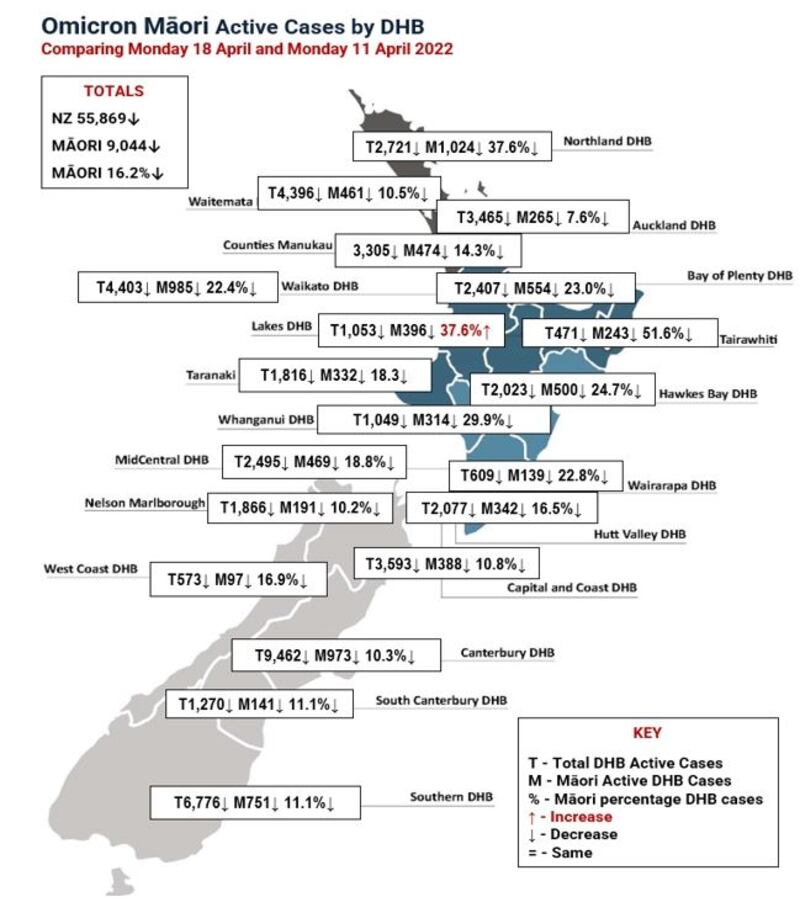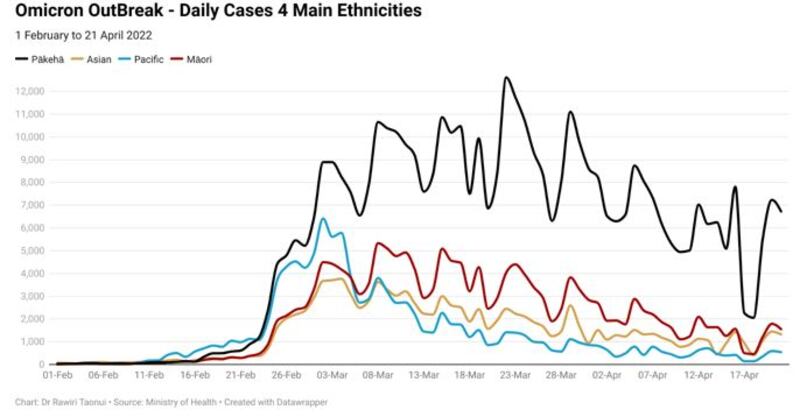New Zealand went to the Orange Traffic Light setting on April 13. New daily cases fell to 5,748 on April 16 during Easter. Since then, new cases have risen to 11,217 and 10,294 over the past two days.
On Wednesday, new cases in all District Health Boards (DHBs), except Wairārapa, were higher than when the country went to Orange last week. The West Coast set a new peak of 142 cases.
In all but four DHBs on Thursday, cases were again higher than when the country went to Orange last week.
Border cases
Current rules at the border allow vaccinated and unvaccinated New Zealanders and vaccinated Australians to enter the country without going through managed isolation and quarantine or having to self-isolate at home.
Entry rules require post-arrival testing but by self-recognisance. The rules also require seven days' self-isolation if testing positive, again by self-recognisance. Consequently, new cases at the border have risen from a low of 26 on April 9 to 66 today.
These minimal border protections make New Zealand vulnerable to new variants that might replace Omicron. While it is difficult to contain a hyper-transmissible variant like Omicron at the border, a minimum requirement of testing on arrival and immediate and compulsory isolation of positive cases in MIQ and genomic sequencing of all border cases is a minimum level of protection.
New Māori cases
There were 1,549 new Māori cases today. Although this is 15% of all new cases, this is below our demographic of 17.1%. Apart from one day during Easter, Māori have had the second-highest cases for 47 consecutive days.
There were 6,725 new cases in the Pākehā community. Pākehā have had the highest daily cases for 58 consecutive days.
Consistent with the raw numbers, Māori have the second-highest rate of new daily cases per 100,000 of the population after Pākehā (Māori 177 per 100,000, Pākehā 198 pe r100,000).

Māori total Omicron cases
There have been 165,385 Māori cases during the Omicron outbreak. This is 19.6% of all cases and much lower than during the Delta outbreak between August 2021 and the end of January this year, which is a testament to the response of our communities.
Despite the exceptionally large total of Pākehā cases (438,559), Pacific peoples have had the highest rate of cases per 100,000 followed by Māori and then Pākehā (Pacific 26,436 per 100,000, Māori 18,867 per 100,000k, and Pākehā 12,899 per 100,000).
Māori active cases
The following table compares total active cases, active Māori cases, and the percentage of Māori active cases in all DHBs between Monday, April 18, and Monday, April 11.
The map shows active Māori cases are declining and at a quicker rate than for non-Māori in all DHBs except Lakes and in that instance the increase is less than 1%.
Among the notable declines, the percentage of Māori cases in Northland has declined from over 50% three weeks ago to 43.7% last week and 37.6% this week. Tai Rāwhiti remains above 50% but several weeks ago was above 60%.

This trend is reinforced in the following chart tracking the daily cases of the four ethnicities.
The chart shows a steadily closing gap between Māori cases and those in the Pacific and Asian communities. Pākehā cases are also declining but not as quickly as for other ethnic groups. There was an expected dip in numbers during Easter followed by a rise which captures an increase in cases since New Zealand moved to the Orange setting and lower testing and unreported cases over Easter.

Underreporting may be a factor in different ethnic numbers. Underreporting may be higher in Māori communities. The extent of this is unknown. The overall trend is toward lower cases numbers, with Māori cases steadily declining and certainly quicker than in the Pākehā. community.
Noho haumaru, stay safe and self-sovereign.
Dr Rawiri Taonui



